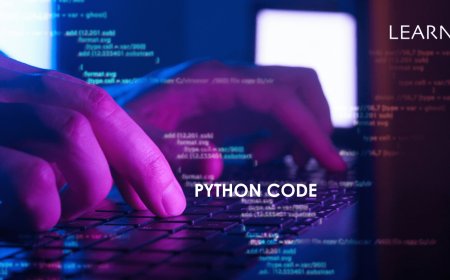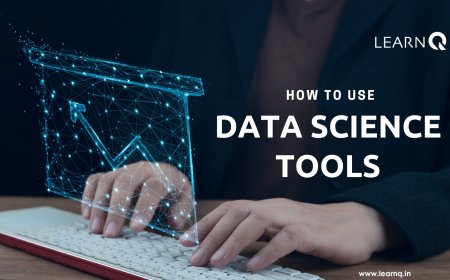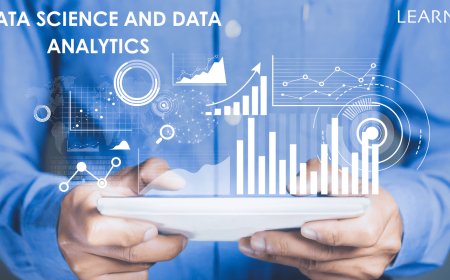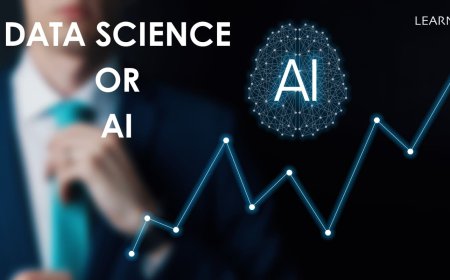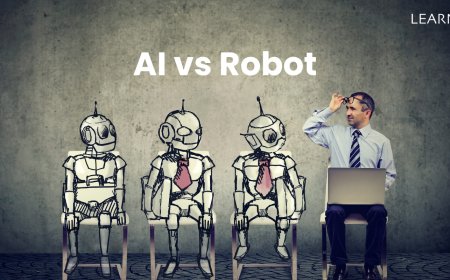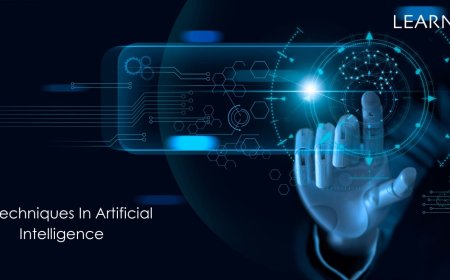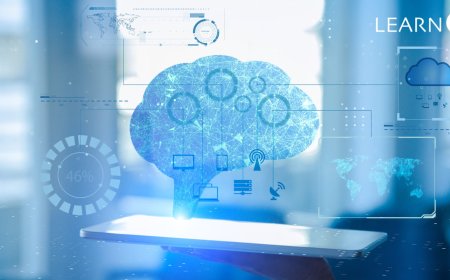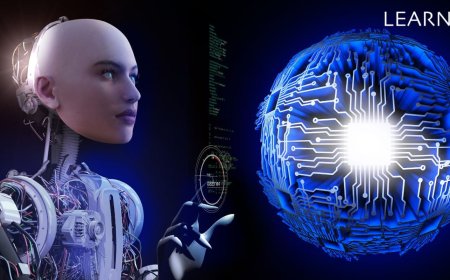Technology is growing super fast. One big thing in this tech world is Machine Learning. It's part of Artificial Intelligence, or AI for short. Machine Learning helps computers learn from data without being told exactly what to do. This is a big deal because it means computers can get better at making predictions or decisions. Lots of companies are using Machine Learning along with Data Analytics, which is looking at big sets of data, and Data Science, which is about finding useful stuff in that data. Together, these things help businesses find important patterns and trends in their data. This helps them make smarter choices.
Machine Learning is used in many different fields including machine finance, machine healthcare, and machine marketing. For example, it helps banks predict which customers might not pay back their loans. In healthcare, it can help doctors diagnose diseases more accurately. Marketing can suggest products to customers based on their past purchases. Because of all this, there's a big demand for people who know about Machine Learning. They're called Certified Data Scientists. These experts know much about Machine Learning and how to use it to help businesses grow and improve.
Understanding How Machine Learning Is Changing Everything
Today, technology is changing fast. Machine Learning (ML) is a big part of this change. It's reshaping industries and how decisions are made. One important part of ML is Supervised Learning. This helps systems learn from labeled data and make predictions or decisions based on what they learn. Businesses in many fields are using ML to understand big sets of data. This helps them make better plans and work more efficiently. ML brings together Data Analytics, Data Science, and Business Analytics. This leads to new ideas and opportunities. As companies rely more on data to stay ahead, the need for certified Data Scientists who know ML is growing fast. ML is all about using data to predict things and recognize patterns. This helps with better planning and making smart choices. ML is used in many ways, from suggesting things to buy online to predicting when machines need maintenance in factories. It's changing how things work in many industries around the world. To do well in this time of big data, professionals need to understand ML basics. This helps them use ML to its fullest and keep growing and coming up with new ideas in business.
Machine Learning Complexity: Making Unsupervised Learning Simple
Machine learning, and understanding unsupervised learning can be tricky. Unsupervised learning includes techniques like clustering and dimensionality reduction, which are useful in data science. But figuring them out can be tough.
1. Picking the Right Algorithm: There are lots of unsupervised learning algorithms out there, each good for different kinds of data. Choosing the best one for your data is hard because you have to think about things like how your data is spread out and how many dimensions it has.
2. Getting Your Data Ready: Before you can use unsupervised learning, you often need to clean up your data and choose which parts are important. This means fixing missing values, making sure everything is in the right format, and picking out the important bits.
3. Understanding What Your Model is Doing: With supervised learning, you can easily see if your model is doing a good job by checking things like accuracy. But with unsupervised learning, it's trickier. You have to figure out if your clusters make sense and come up with new ways to tell if your model is doing well.
4. Dealing with Too Much Data: Sometimes you have way too much data, which can make things slow and hard to work with. Dimensionality reduction helps by shrinking your data down while keeping the important stuff. But it's tough to do this without losing important information.
5. Handling Big Datasets: Unsupervised learning can be slow, especially with really big datasets. You might need to speed things up by using special tricks to run your code faster or by spreading the work across multiple computers.
Making sense of unsupervised learning in machine learning isn't easy. You need to understand how it works, try lots of things, and be good at using tools like Python and data visualization to help you out. But once you get the hang of it, you can do cool stuff like making predictions and finding patterns in data, which is pretty neat.
What are the main problems or questions you face when you start learning about machine learning, and how do you plan to get better at it?
Getting started with machine learning might feel overwhelming, especially if you're not into math or computers. You might be wondering where to even begin with all the stuff out there. Some folks might not know which coding language to start with or how to understand those fancy algorithms. If you want to get into it, you'll probably need to teach yourself a bit, maybe take some online classes, and try some hands-on projects. Before you dive into the complicated stuff like deep learning, it's important to get the basics down. That means knowing how to work with data, understanding some stats, and getting comfortable with coding. And don't forget to keep up with what's new in the field by reading research papers and chatting with other people who are into it online. Building a good foundation and keeping on learning through doing projects and teaming up with others is key to getting better at machine learning.
A Guide to Getting Started with Machine Learning
Are you curious about machine learning but not sure where to begin? Machine learning is a part of artificial intelligence that allows systems to learn from data and make predictions or decisions without explicit programming. In this guide, we'll break down the essential steps for beginners to start their journey into the world of machine learning, focusing on two advanced techniques: semi-supervised and self-supervised learning.
Grasping the Basics
Before diving into advanced techniques, it's crucial to understand the fundamental concepts of machine learning. Machine learning involves algorithms that learn from data, find patterns, and make informed decisions or predictions.
Step 1: Build a Strong Foundation
Start by learning key concepts like supervised learning (learning from labeled data), unsupervised learning (extracting patterns from unlabeled data), and reinforcement learning (training agents to make sequential decisions through interaction with an environment).
Step 2: Learn Programming and Math Basics
To excel in machine learning, it's essential to be proficient in programming languages like Python and have a basic understanding of linear algebra, calculus, and probability.
Step 3: Explore Advanced Techniques
Once you're comfortable with the basics, explore advanced techniques like semi-supervised and self-supervised learning.
-
Semi-Supervised Learning: Models learn from a mix of labeled and unlabeled data, which is helpful when labeled data is limited or costly.
-
Self-Supervised Learning: Models learn from data without external labels, using techniques like autoencoders, contrastive learning, and generative adversarial networks (GANs).
Step 4: Practice and Experiment
Mastering machine learning comes through practice and experimentation. Work on projects, join online competitions and collaborate with peers. Experiment with different algorithms, hyperparameters, and techniques to understand their strengths and limitations.
Step 5: Stay Curious and Keep Learning
Machine learning is an ever-evolving field. Stay curious, keep up with the latest developments, and engage with the machine learning community through forums, conferences, and online courses.
Model Evaluation and Validation
When we're working with computer programs that learn from data, it's really important to make sure they're doing what we want. We do this by checking and testing them in different ways, which we call "evaluation and validation." These steps help us see if our programs are accurate and dependable. Evaluation means looking closely at how our programs perform using different measures, like accuracy and how often they get things right. But just because a program gets high scores on these tests, it doesn't always mean it's perfect.
How Teamwork Makes Better Predictions in Machine Learning
In the world of machine learning, there's a cool trick called ensemble methods. They're like teamwork for models, helping them make better predictions together than they could on their own. Let's take a closer look at how this teamwork boosts machine learning.
Types of Ensemble Methods:
1. Bagging (Bootstrap Aggregating): Bagging is like having a bunch of friends analyze different parts of the same problem. One famous example is the Random Forest algorithm, where each friend is like a decision tree looking at a different piece of the puzzle.
2. Boosting: Boosting is when you learn from your mistakes. You start with a weak guesser, learn where it went wrong, and then improve on it. Algorithms like AdaBoost and Gradient Boosting Machines do just that.
3. Stacking: Stacking is like blending different friends' opinions. You listen to what each one thinks and then come up with your final answer. It's about combining the best ideas from everyone.
4. Voting: Voting is simple – you ask everyone for their opinion, and the most popular answer wins. It's like deciding where to eat with friends; you go where most people want to go.
Advantages of Ensemble Methods:
-
Better Predictions: Teamwork often leads to more accurate predictions by considering different perspectives.
-
Robustness: By listening to multiple opinions, the team can handle unexpected situations better.
-
Versatility: Teamwork isn't just for one type of problem; it works for lots of different ones.
-
Understanding: Some methods, like Random Forests, can even tell you which parts of the problem are most important.
Machine learning is a really powerful technology that's changing how we do things. It helps us analyze data, make predictions, and solve tricky problems in all sorts of areas. Imagine it like a smart computer that learns from examples, adapts to new info, and can even make decisions on its own. This technology is having a big impact on lots of different industries. But as we use it more, we need to think about things like ethics (doing the right thing), being transparent (being open about what we're doing), and doing ongoing research (continuously learning and improving). It's all about finding the right balance between coming up with cool new ideas and making sure we're doing things responsibly. If we ethically use machine learning and keep working to make it better, it could make our world smarter and more efficient.
